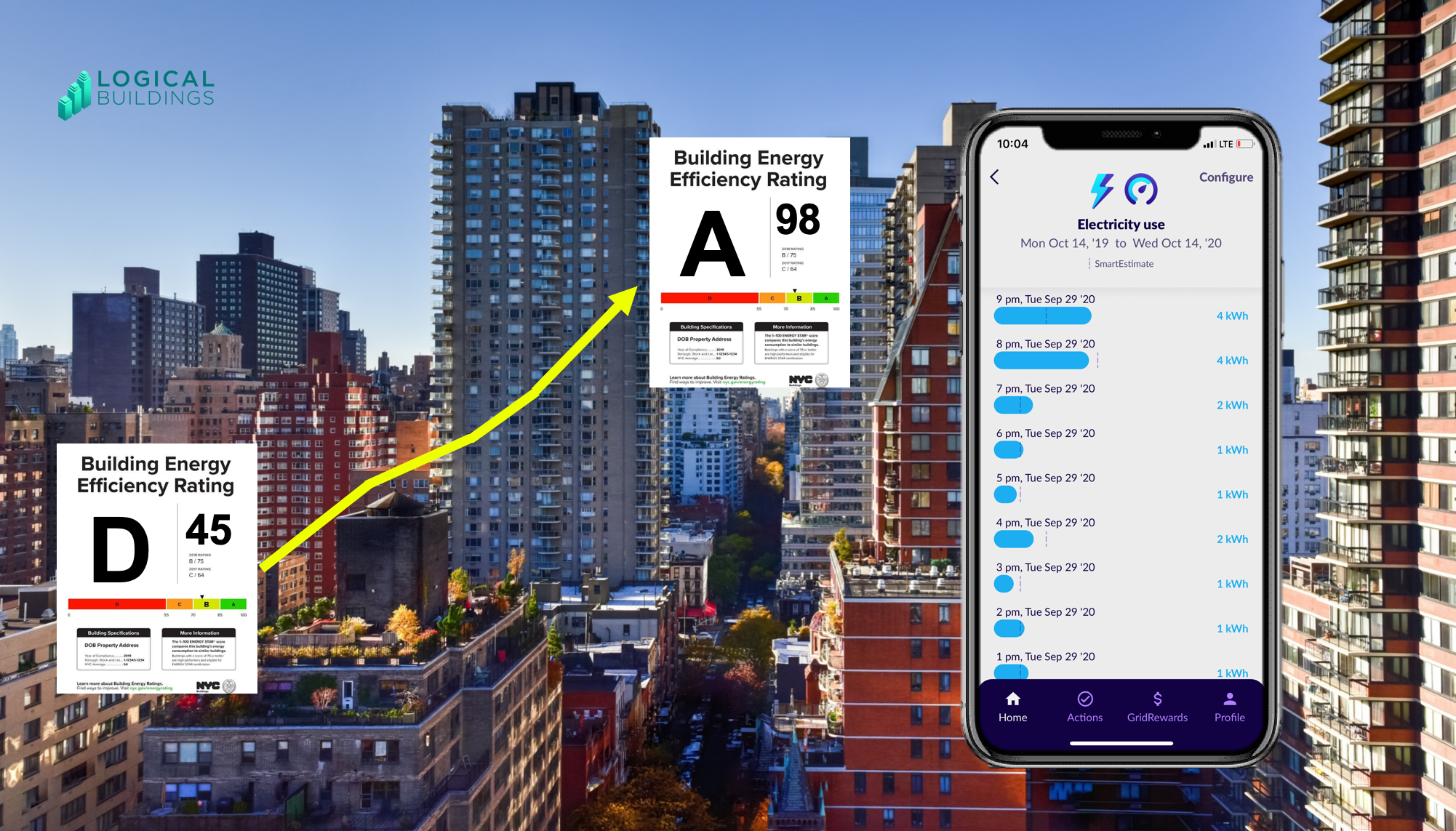Are you noticing some surprising (and, in many cases, underwhelming) new letter grades posted on your building? You’re not alone.
As of October 31, 2020, for the first time in New York City history, all residential and commercial buildings of more than 25,000 square feet are now required to post a letter grade, ranging from A to D. More than 40,000 buildings have posted their grades, with more than half scoring a dismal “D” rating or less. The grades “provide a new level of transparency for building energy emissions” Department of Buildings Commissioner Melanie La Roca said in a statement. “The public has a right to know which large buildings are taking their commitment to sustainability seriously.”
As the letter grades afford building owners transparency and data-driven clarity about their assets’ energy consumption for the first time, building owners, management companies and resident owners have been stunned by the inefficiency and wasted expenses they have been incurring for years.
To rectify, and avoid costly fines based on the levels of carbon emissions associated with bad grades, many are turning to third-party experts at Logical Buildings to implement efficiency measures to boost their grade while significantly reducing monthly energy costs. Logical Buildings is a smart buildings software company and exclusive partner of Con Edison, enabling building owners to reduce energy usage without sacrificing the tenant experience.
“Nobody wants to put a ‘D’ on their building,” said David Klatt, Chief Operating Officer at Logical Buildings. “It’s already driving a lot of questions from lenders, from condo boards and from tenants and is clearly a catalyst for more focus on energy management and sustainability issues. Buildings can take simple steps to improve their grades, and they’re now clamoring to get that done ASAP.” According to Klatt, the letter grading is driving an explosion of interest in building energy use for a few key reasons:
- Bad Grades Signal Low-Hanging-Fruit Cost Savings Are Available. Moving from a low grade to a higher one, and reaping the associated monthly cost savings in energy use, is simply a matter of unlocking information. Using Logical Building’s proprietary technology, SmartKit AI, owners and managers unlock countless data points previously unobtainable. “If you’ve got lights on in the basement in the middle of the night, that’s expending cost and energy. With our software, a manager can see everything happening in real time, and gets alerts on actions to take from within our app to reduce energy. Those lights? You can turn them off from the app when you’re not even on site. That’s a no brainer, easy win that every owner / manager is trying to score now,” say Klatt.
- Resident Owners and Tenants Care About Saving Money. When faced with a clear indication of a building’s energy efficiency, prospective tenants in both commercial and residential buildings prefer buildings with better grades. NYC has some of the highest electricity prices in the country, with expenses like lighting and air conditioning among the top electrical line items. In addition, space heating systems have the highest energy consumption among all building systems in NYC. A building with an energy grade of “A” will be highly attractive for tenants, who are often willing to pay a premium in exchange for reduced energy expenses.
- Bad Grades Will Be Steeply Fined. The City’s grading system was not established solely for transparency and consumer education. Rather, there are hefty fines that will come into play in 2024 for any building that fails to meet strict emissions limits.Fortunately, Logical Buildings just launched it’s latest revolutionary software product, GridRewardsTM, a consumer app that allows every resident and small business to follow the same protocols of the building (counting toward the entire property’s carbon emission reduction) and receive “energy revenue” from Con Ed.
- Buildings Want the Sustainability Stamp. In addition to the economic factors being brought to light by the grade, many building owners seek a better grade because it is a highly-visible indication of a building’s commitment to sustainability — an ever important achievement in the covid climate and the post-covid era.
Logical Building’s platform integrates into building systems and unlocks a treasure trove of previously unobtainable energy data, and turns that data into custom plans for energy reduction. “This year, we’re seeing greater than 15% reduction on energy bills across buildings on our platform, and that number continues to climb as we unlock more and more data,” Klatt explains. “In addition to improving sustainability scores and making a real impact on carbon output, our platform saves millions of dollars for our clients. It’s a win for building owners and building residents, a win for the city, and a win for the environment.”
Logical Building’s game-changing software isn’t just for buildings struggling to meet the grade. In fact, buildings that already prioritize energy management can see rapid results in savings and can be earning energy revenue, putting money back into the building from the utilities. “We have yet to find a building that can’t realize instant and outsized results from our software,” says CEO Jeff Hendler. “Every single building can be earning energy revenue and reducing waste. Even “A” graded buildings want to lower their bills, lower energy output, and earn money from the utilities. We make it quick, easy and inexpensive to do.”
With a portfolio of the largest national owners and operators using the LogicalBuilding software, the company is leading the way in sustainability and building management technology. Interested in understanding how Logical Building transforms buildings? Read the case study on how LB saved Edison Properties $85,000 in one day.

